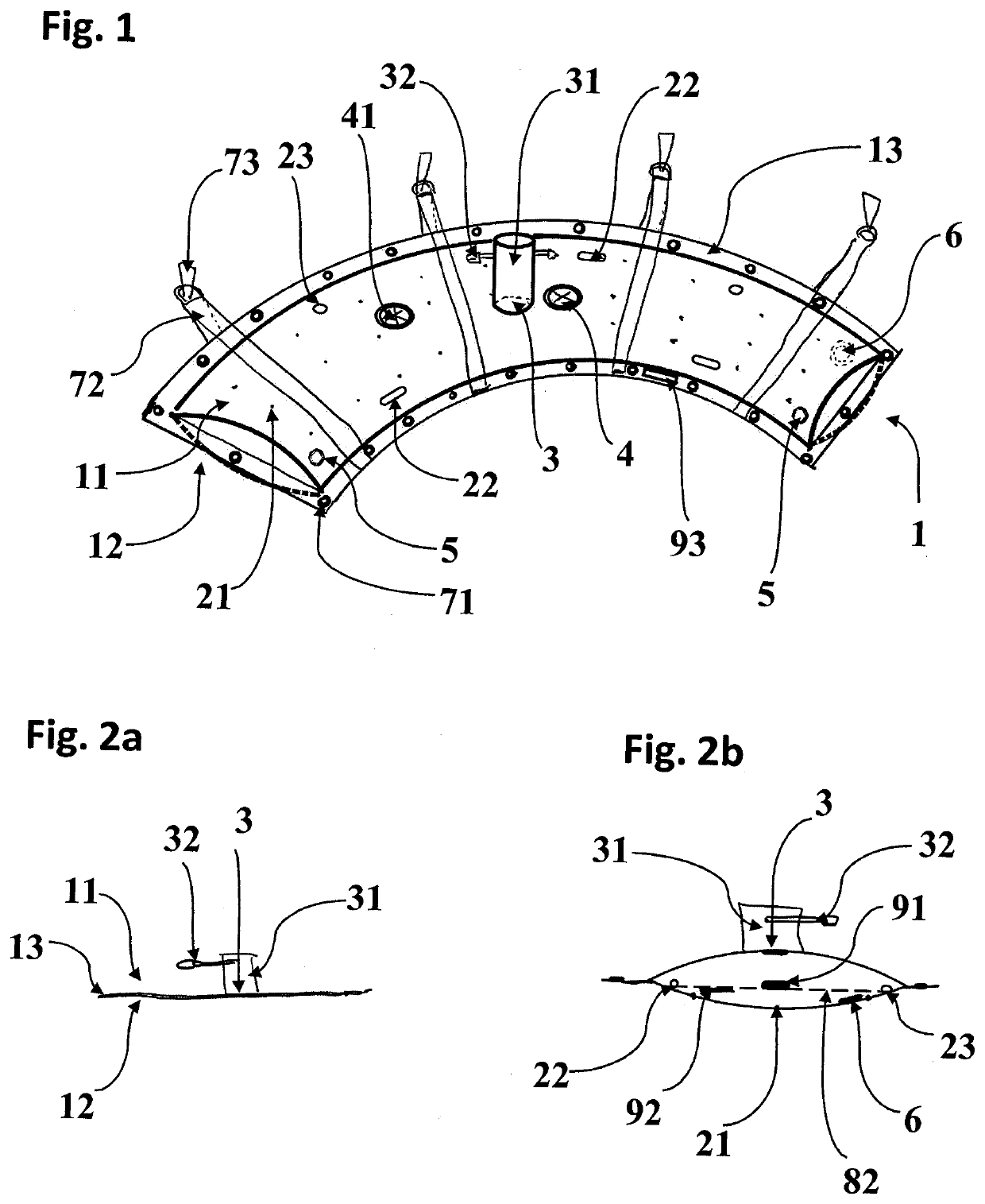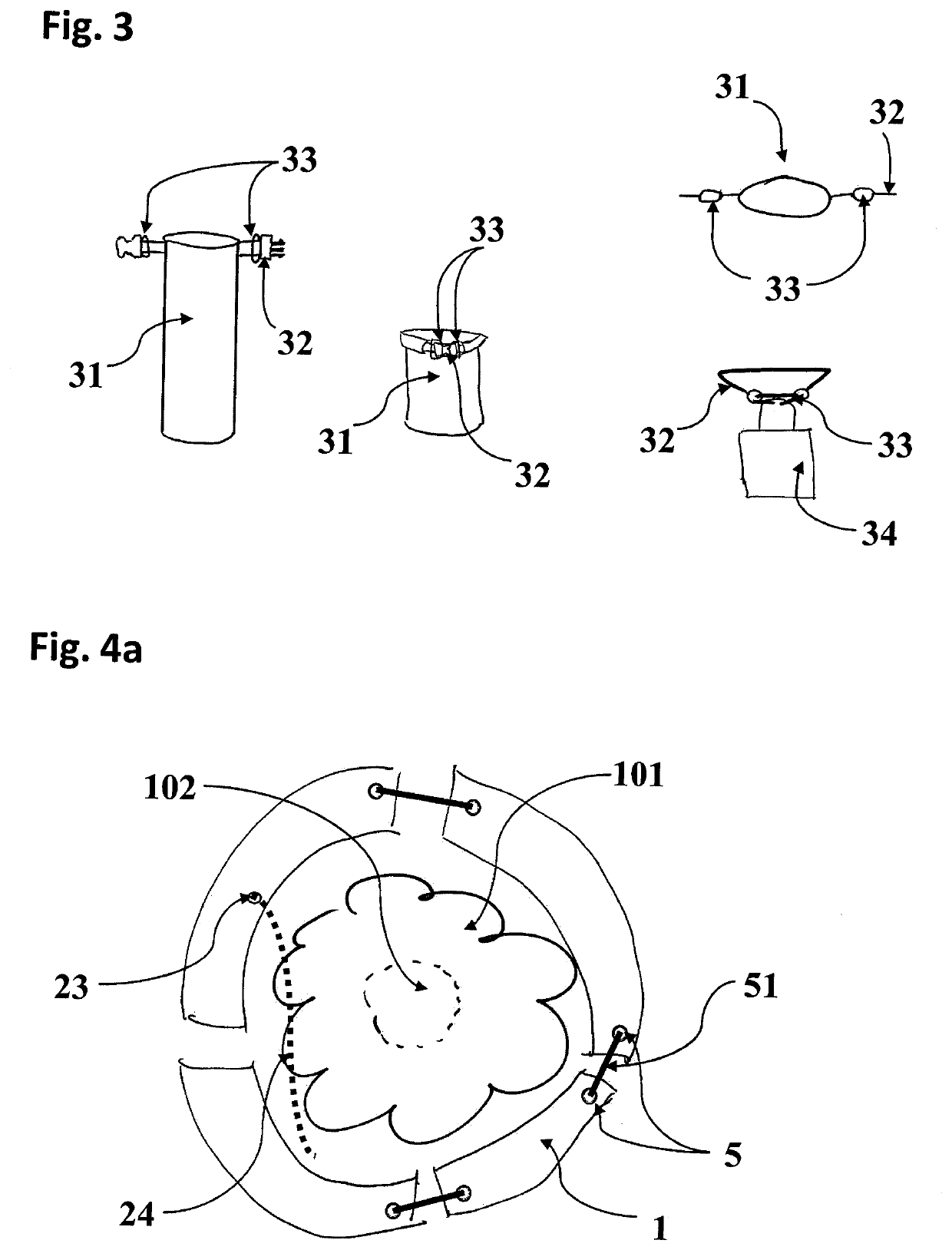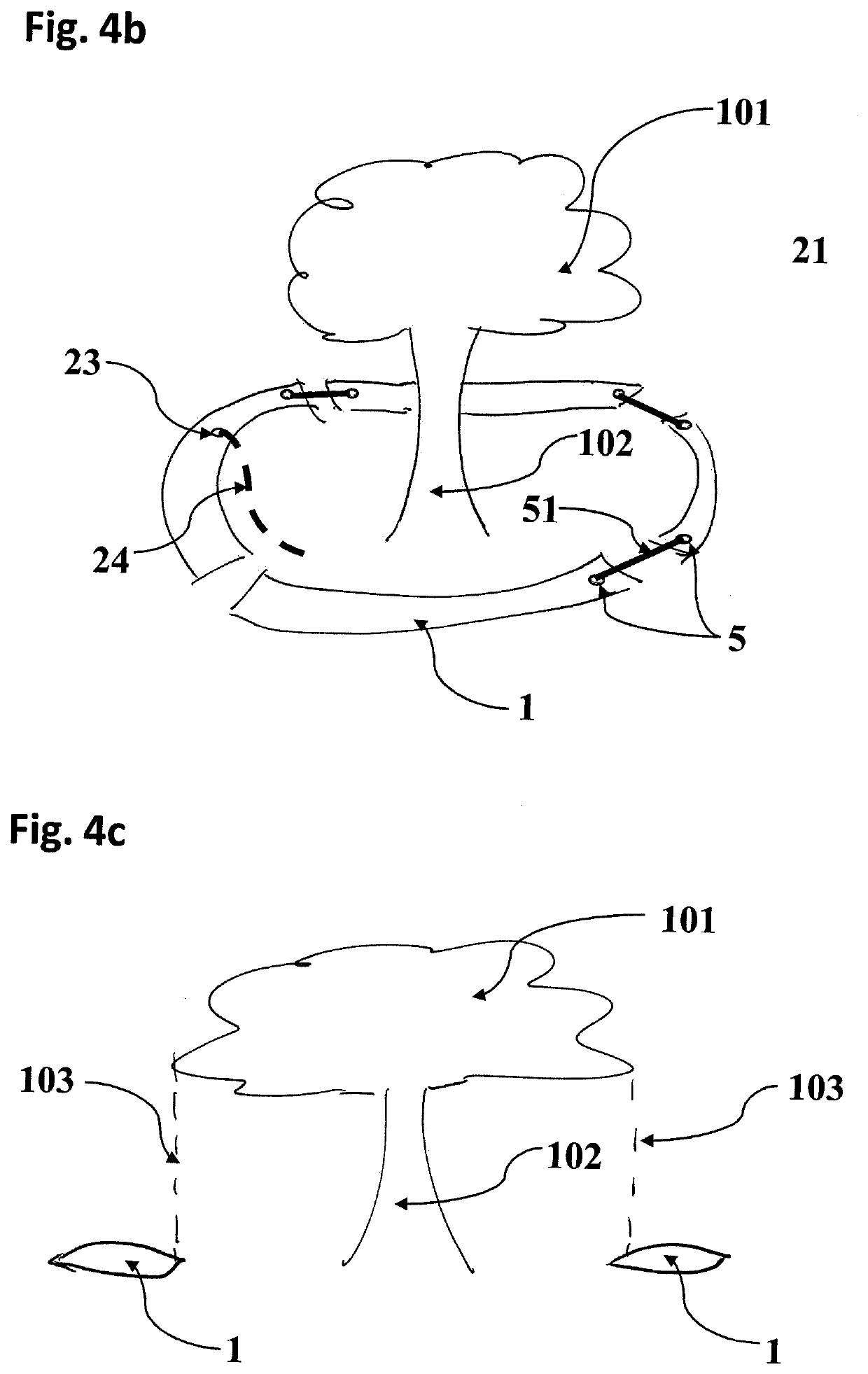Irrigation bag and bag assembly for irrigation of primarily fully-grown, mature and veteran trees and method of tree irrigation
a tree and bag assembly technology, applied in the field of irrigation bags, can solve the problems of unfavorable human settlements, unfavorable tree mortality, and ineffective resolving of tree mortality by new planting
- Summary
- Abstract
- Description
- Claims
- Application Information
AI Technical Summary
Benefits of technology
Problems solved by technology
Method used
Image
Examples
example 1
[0106]Irrigation bag for the irrigation of primarily fully-grown, mature and veteran trees in a variant containing a suitable design that contains non-pressurized filling opening (3) and filling opening (4) with pressure filling fitting, and also contains in the lower section simple openings (21) for liquid release and water permeable seams and drippers (22) and a connecting piece (23) with dripping hose connection (24), and the volume of the bag is 1000 litres. It also contains pressure relief valve (41) for pressure filling. Opening (4) is equipped with a branch (52) for connecting the interconnecting hose (51). It also contains at least two connecting elements (5) to guide the liquid into the next bag (1), which are created in the upper part (11) of the bag in the middle of the upper part (11) of the bag. The interconnecting element (5) is the hose connecting piece. The interconnecting element (5) and filling opening (4) contain an overflow flap to prevent backflow of liquid. The...
example 2
[0112]Irrigation bag according to example 1, with the difference that it is in the shape of the letter C.
example 3
[0113]Irrigation bag according to example 1, with the difference that in the cross-section it is in the shape of the letter D, wherein the bottom part (12) of the bag is formed by a solid base.
PUM
 Login to View More
Login to View More Abstract
Description
Claims
Application Information
 Login to View More
Login to View More - R&D
- Intellectual Property
- Life Sciences
- Materials
- Tech Scout
- Unparalleled Data Quality
- Higher Quality Content
- 60% Fewer Hallucinations
Browse by: Latest US Patents, China's latest patents, Technical Efficacy Thesaurus, Application Domain, Technology Topic, Popular Technical Reports.
© 2025 PatSnap. All rights reserved.Legal|Privacy policy|Modern Slavery Act Transparency Statement|Sitemap|About US| Contact US: help@patsnap.com



